Retaining Walls 101
Many yards have strange elevations that really make them hard to enjoy. Have you ever tried to garden up a slope? Good luck! The common solution to this problem is a retaining wall. Retaining walls are important pieces of landscape architecture for homeowners who want to get the most out of their property.
What Would I Need a Retaining Wall For?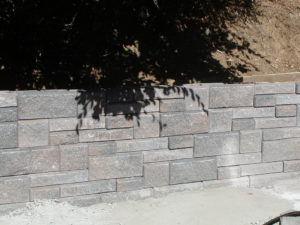
You might see retaining walls on people’s properties and admire the atmosphere that they create. Those walls don’t just look good – they have an important function! Retaining walls are built to resist the side pressure of soil when a slope’s angle has been cut to maximize the amount of flat surface below the wall. Retaining walls keep gravity, hydrostatic pressure, and other forces of nature from causing erosion or a loss of the ground’s structural integrity. Larger retaining walls even protect structures from sliding soil that could cause considerable damage.
So if you have a slope in your lawn or garden, a retaining wall can be used to reshape the landscape to get more usable space. They can be small and simple, such as in a garden where you can increase the amount of flat surface area or large works of stone masonry that completely changes your lawn.
Retaining Wall Materials and Types
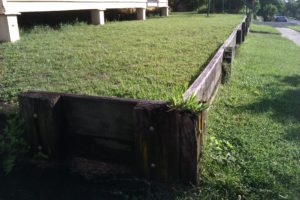
- Retaining walls can be made with poured concrete, concrete blocks, natural rocks or boulders, or treated wood. Your choice can depend on whether you want to put it up yourself, have professionals do it, how durable you need it to be, and what works best for your backyard aesthetic.
Whatever material you choose, you have to make sure that your retaining wall has a purpose. It’s not enough to stack some stones along a freshly dug edge! You’ll have two choices for walls: gravity retaining walls and reinforced retaining walls.
Which one you need depends on certain factors:
- What sort of ground is the retaining wall holding back? Is it soil, clay, sand, or a mix of these?
- Is the ground above or below the wall sloped?
- How high does the retaining wall need to be?
- Are there property features sitting above the retaining wall?
- Is there a driveway or walkway that’s influencing the water, or a heavier feature like a pool?
Gravity Retaining Wall vs. Reinforced Retaining Wall
A gravity wall is a retaining wall that relies solely on its own weight to stay up. It uses simple mechanics and principles like setback (a step-like recession into where the retaining wall is set up) and the total unit mass of the wall to stay highly stable on its own. Because they’re dependent upon the setback and weight to stay up, they are typically shorter and used to make extra space in gardens.
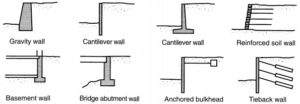 A reinforced retaining wall creates a solid soil mass behind the wall with layers of something called geogrid. Geogrid is a high-strength material that won’t pull apart under tension, allowing the wall to withstand more soil pressure from behind. If you’re looking to change a large piece of your property, a reinforced retaining wall will usually be the way to go.
A reinforced retaining wall creates a solid soil mass behind the wall with layers of something called geogrid. Geogrid is a high-strength material that won’t pull apart under tension, allowing the wall to withstand more soil pressure from behind. If you’re looking to change a large piece of your property, a reinforced retaining wall will usually be the way to go.
The two biggest factors in determining which wall should be set up are slopes and the surcharges or added weight sitting above your retaining wall. Sloping above or below a retaining wall can weaken your wall, and might require geogrid reinforcement: a slope above adds more pressure on the structure, while a slope below leaves the wall susceptible to erosion. Surcharges can be patios, driveways, walkways, or a pool – anything on top of the soil that adds extra weight to the soil. If any of these features sit above the retaining wall, you’ll need the extra geogrid reinforcement.
While it might be a lot of work, retaining walls can really change the way you use your property and preserve what you already have. If you need to upgrade your garden or lawn, give them some thought! And don’t forget to read more Green Ninja insight and call us when you’re ready to start that retaining wall.
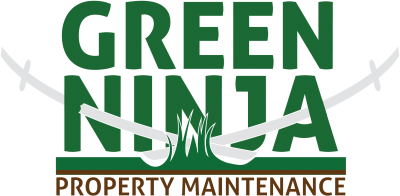
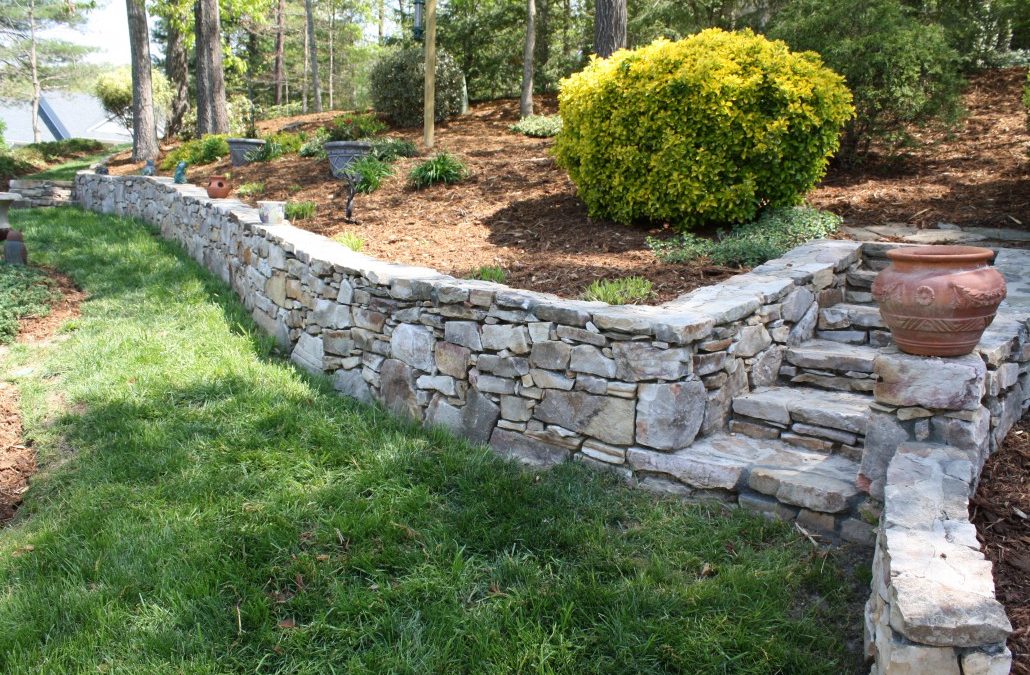
Recent Comments